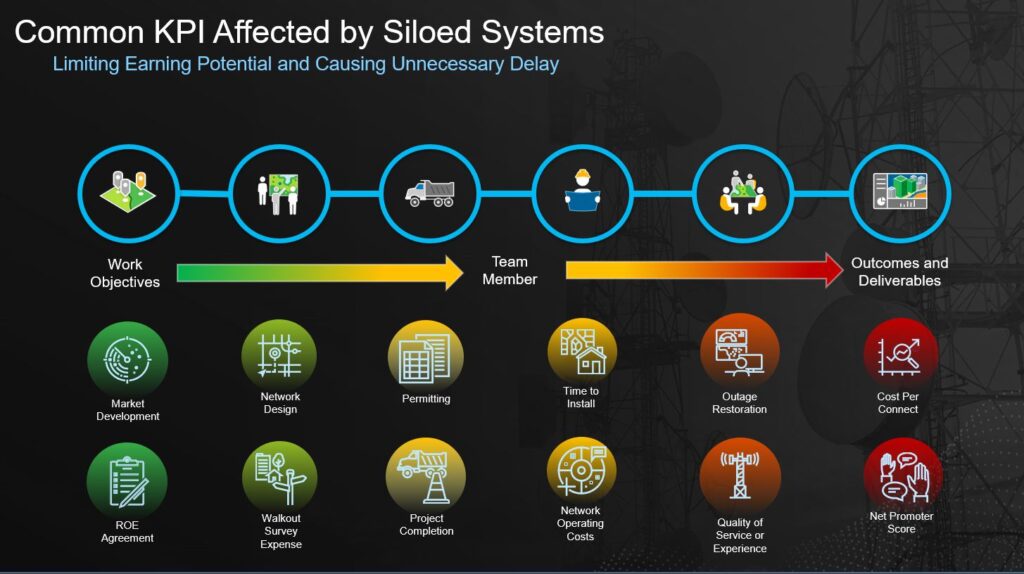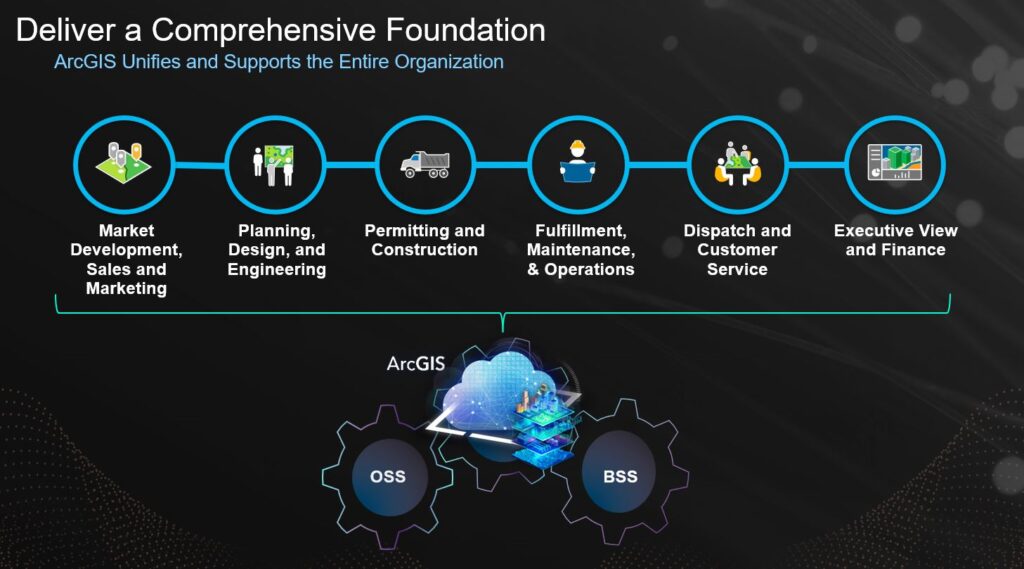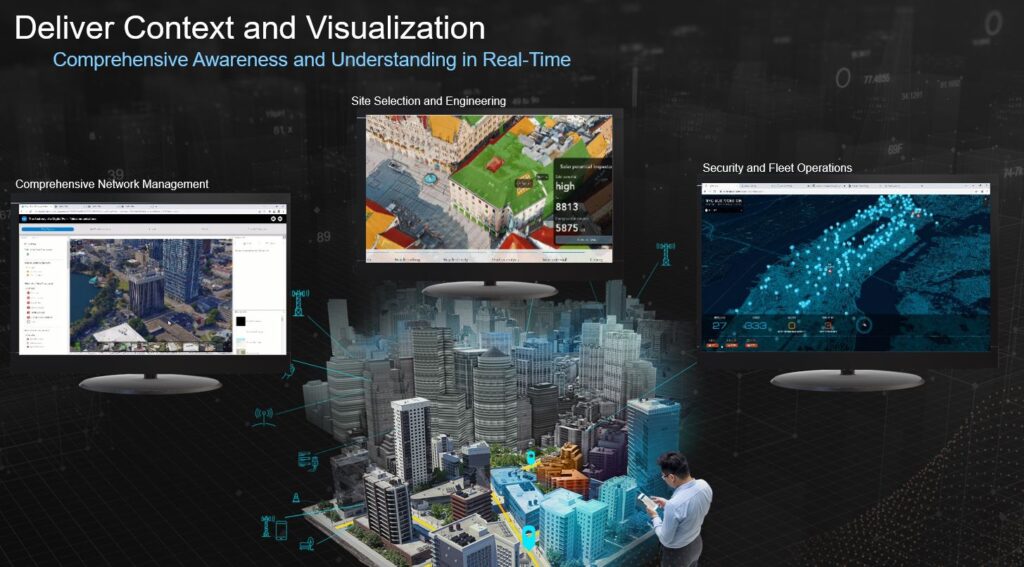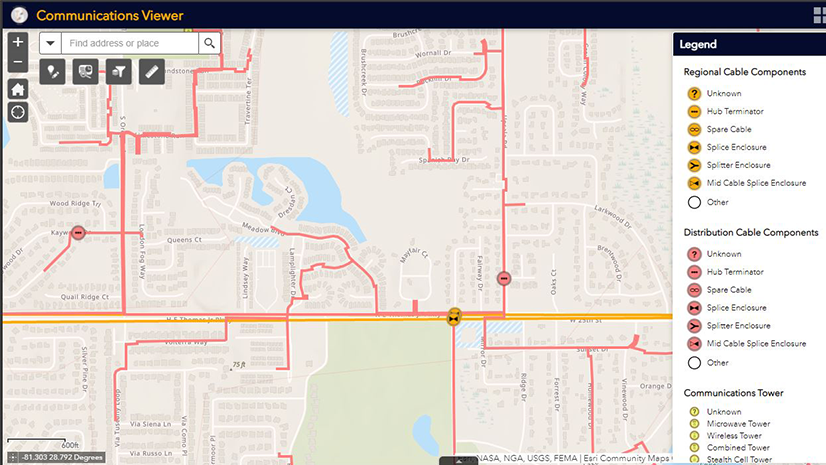In the ever-changing and fast-paced telecommunications industry, staying ahead of the curve requires not just innovation but a holistic approach to organizational strategy and tactics. A comprehensive view of the organization, with its legacy systems, and the ability to seamlessly integrate them is paramount to meeting today’s consumer needs. Esri’s ArcGIS is the market leading enterprise solution for telecommunications providers, offering unequaled capabilities in combining existing Operational Support Systems (OSS) and Business Support Systems (BSS) with robust GIS capable network management solutions. In this era of digital transformation, the importance of workflows and resources that provide spatial intelligence, facilitate collaboration, while eliminating siloed network management platforms or open-source software, cannot be overstressed.
The Need for a Comprehensive View
Telecommunications providers operate in a highly competitive and complicated environment, managing extensive networks, diverse services, and countless customer interactions. In the absence of a comprehensive view providing situational awareness, organizations risk encountering operational bottlenecks, delays, and frustrations. A holistic perspective that encompasses infrastructure, operations, and business processes is crucial for streamlined operations. Without such an approach, the potential for decreased revenue and operational inefficiencies is a certainty.

To address these challenges, telecommunications providers recognize the need for a unified workflows and a comprehensive view of their organization. This involves breaking down silos and integrating disparate systems to foster a seamless flow of information. The goal is to create an ecosystem where data can be analyzed collectively, enabling more informed decision-making and strategic planning, before dedicating precious resources and acting.
ArcGIS: The Ideal Ecosystem
Esri’s ArcGIS stands out as the ideal solution for telecommunications providers seeking to integrate their network infrastructure with existing OSS and BSS resources seamlessly. At its core, ArcGIS is a Geographic Information System (GIS) that offers a comprehensive system for visualizing and analyzing spatial data. Its capabilities extend beyond traditional mapping, providing organizations with the tools to understand valuable spatial aspects of their network infrastructure.

The integration of existing systems is a complex task that requires a platform capable of handling diverse data sources and formats. ArcGIS excels in this aspect, acting as a unifying force for different systems. By bringing together existing OSS and BSS resources, with network design and management platforms, ArcGIS becomes the hub for a cohesive and integrated approach to telecommunications management.
Since no one network is built the same, Esri maintains partnerships with industry experts to build several options for next generation network management that can securely manage any network topology on any device. Thru this approach, users have several choices to bring in network specific tools that fit their unique needs and seamlessly participate in a comprehensive GIS system accessible to the entire enterprise
The capabilities of the ArcGIS system enables organizations to create a visual representation of their entire network, allowing for a deeper understanding of the spatial relationships between various elements. Since everything in telecom has location in common, spatial intelligence is invaluable for optimizing network performance, identifying potential issues, and planning for future expansion.
The Critical Role in Digital Transformation
As telecommunications providers undergo digital transformation initiatives, the integration of existing systems – especially network management platforms – ArcGIS becomes more critical than ever. The digital landscape demands agile and integrated systems that can adapt to the evolving needs of the industry. Any system that does not seamlessly integrate with GIS risks introducing silos, hindering the flow of information, and impeding critical processes.
With ArcGIS, organizations ensure that spatial intelligence is embedded in every aspect of the organization’s workflows. From planning and design to implementation and optimization, the system becomes the foundation of the digital transformation journey. Its ability to seamlessly integrate with most legacy systems allows organizations to build upon existing infrastructure while embracing the latest technological advancements.
In the digital era, where data is critical, ArcGIS empowers telecommunications providers with the tools to harness the full potential of their spatial data. The system becomes a catalyst for innovation, providing a foundation for the development of advanced analytics, machine learning, and artificial intelligence applications tailored to the telecommunications industry.
Building a Digital Twin for Enhanced Understanding
One of the standout features of ArcGIS is its ability to create a digital twin of the telecommunications network. A digital twin is a virtual replica of the real world, and when it comes to physical network infrastructure, providing a real-time and dynamic representation of its components is essential. This virtual model allows organizations to monitor the status of their network in real-time, plan and design changes, ensure coverage quality, determine drive time analysis, measure expenses, and predict numerous other outcomes.

A digital twin serves as a powerful tool for enhancing understanding and decision-making. It enables organizations to identify potential issues before they escalate, simulate the impact of changes or upgrades, and optimize the performance of their network. This proactive approach to network management can significantly reduce downtime, improve efficiency, and ultimately enhance the overall quality of service.
Facilitating Communication and Collaboration
ArcGIS is much more than just a mapping tool; it serves as a centralized ecosystem for communication and collaboration, decision-making, operations and maintenance, and executive oversight within telecommunications organizations. In an industry where seamless communication and organizational understanding is pivotal, ArcGIS provides a space for teams to share insights, collaborate on projects, and make data-driven decisions.
It is purpose built for collaboration and facilitating effective communication both internally and externally securely. Teams can simplify communications, share valuable insights in real-time, and coordinate activities with ease. Whether it’s planning maintenance activities, optimizing network performance, or strategizing for expansion, ArcGIS becomes the enterprise environment for cross-departmental collaboration.
This collaborative approach not only improves efficiency but also fosters a culture of shared knowledge, innovation, and learning within the organization. In an industry where adaptability is key, the ability to communicate and collaborate effectively is often a decisive factor in staying ahead of the competition.
A Comprehensive Approach to Success
In conclusion, Esri’s ArcGIS delivers the foundation telecommunications providers can build successful strategic and tactical initiatives upon in the digital era. By addressing the need for a comprehensive organizational view, seamlessly integrating network designs with legacy OSS and BSS resources, and providing advanced capabilities such as building a digital twin, ArcGIS is indispensable and unequalled.
As telecommunications organizations navigate the complexities of their networks and services, the importance of a unified and spatially intelligent platform cannot be overstated. ArcGIS not only meets these requirements but also exceeds expectations by fostering communication, collaboration, and innovation within the organization.
In a landscape where digital transformation is not just a choice but a necessity, companies must choose platforms that align with their strategic goals and facilitate long-term growth. ArcGIS stands out as a demonstration of the transformative power of GIS technology in telecommunications, unlocking new possibilities for efficiency, adaptability, and success.
Telecommunications providers that embrace ArcGIS position themselves as industry leaders in the ever-evolving digital landscape. As the industry continues to advance, the role of spatial intelligence and importance of integration of network management systems with GIS will only become more pronounced. In choosing ArcGIS, telecommunications providers make a strategic investment in their future, ensuring a resilient, efficient, and forward-looking infrastructure that can stand the test of time.
To learn more about Esri in Telecommunications, visit our industry page: www.esri.com/telecom



